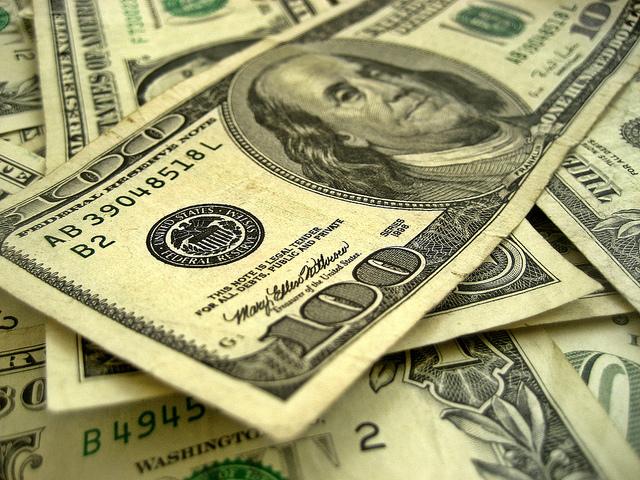America and Australia: economic ties as strong and important as security ties
Posted By Niels Marquardt on August 11, 2014 @ 14:30
 [1]
[1]This week in Sydney, the annual AUSMIN meeting of US and Australian Defence and Foreign Ministers will shine an appropriately bright light on the past century of close and constructive security collaboration between our two nations’ military forces. From US soldiers under the command of Australian General John Monash in WWI to ongoing rotational training deployments of US Marines in Darwin, we’ll be reminded of important shared sacrifices in the defence of democracy and freedom.
What may be lost in this annual event is recognition of the even closer—and arguably more important—economic relationship that has joined and benefitted America and Australia for at least twice as long. And that relationship shows no sign of losing its relevance or primacy.
Since the American trading ship Hope first delivered 7,500 gallons of rum to Sydney in 1793, that economic relationship has grown steadily. Indeed, America has become, according to Australian Foreign Minister Julie Bishop earlier this year, ‘Australia’s most important economic partner’. She bases her analysis on the trillion-dollar-plus, two-way investment relationship, as well as America’s role as a top-three trading partner and a major collaborator on R&D and innovation. No other nation looms as large as America when the total economic relationship with Australia is considered.
Still, many remain unaware of America’s unrivalled economic importance to Australia. America is seen as yesterday’s man, a casualty of excitement around ‘the Asian Century’ in which future opportunity and prosperity supposedly will flow from important trading partners north of Australia. Indeed, in the 2013 Annual Lowy Institute Poll [2], 76% of Australians described China as having ‘the most important economy to Australia’, while only 16% ascribed this role to the US. But why is that?
There’s no doubt the Asian Century is an important development, for America as well as Australia. Asian markets—already of huge value—will only become more important, especially for exporters of coal, liquefied natural gas, iron ore, beef, and other key commodities. And our top trading partner often seems to be misunderstood as our top economic partner. Public opinion typically undervalues the critical role investment plays in creating prosperity and raising living standards. The US and the UK are the largest foreign investors in Australia, followed distantly by Japan; China is in eight position with total investment in Australia worth less than 4%of the American total. Relative positions may change over time but the current trend—with massive, continuing American investment in huge resource projects like Gorgon in WA and APLNG in Queensland—is for American primacy to strengthen, not diminish. Such projects demonstrate clearly that the Asian Century presents enormous opportunities for multiple countries to benefit simultaneously, as American capital and technology unlock Australian resources for export to Asian markets.
The most basic impact of foreign investment on this enormous scale is massive job creation that benefits tens of thousands of citizens in both countries. Ask yourself: how many Aussies do you know who work in American firms here? Firms like IBM, Boeing, GE, Chevron, and HP each employ thousands of Australians, and there are dozens more like them. Eastward across the Pacific, Australians actually out-invest Americans in per capita terms, having invested over $400 billion in America. Westfield is perhaps the most visible example, creating thousands of jobs in American commercial real estate. BHP Billiton is the single largest foreign investor in America’s ongoing energy revolution. In just two decades, Macquarie has grown rapidly to employ over 2,000 Americans and play a leading role in the US natural gas market.
Included in those jobs are key leadership positions in each country. Chris Delaney at Goodman-Fielder, Tom Gorman at Brambles, and Mike Kane at Boral are examples of Americans running Australian companies here. Talented Australians have also run major global corporations in the US, such as Andrew Liveris at Dow Chemical, David Mackay at Kellogg, and James Gorman at Morgan Stanley. The talent bridge across the Pacific is a well-travelled, two-way street that benefits both nations.
Those anecdotes and statistics help illustrate the vitality of an unparalleled economic partnership. Underpinning it are economic arrangements like the 2005 Australia–US Free Trade Agreement (AUSFTA). Since then bilateral trade has expanded significantly. Now both countries are taking the lead on a 12-nation, multilateral trade negotiation called the Trans-Pacific Partnership (TPP). The TPP has the potential to open non-traditional markets for freer competition and to set rules-of-the-road for 21st century commerce. While initially covering over 40% of global GDP, it’ll provide the template for future free trade across the Asia-Pacific, and so is of importance beyond the first tranche of participants.
Perhaps the greatest challenge going forward is the risk of complacency. Little in our important economic relationship ‘just happened’. Business, labour, and government across the Pacific all worked deliberately and constructively—and often through great difficulties—to achieve the outcomes we enjoy today. For the relationship to remain vibrant into the future, key stakeholders in both countries need to remain engaged with and through their governments, and to help sensitise their publics to the high stakes involved. Perhaps it would help if both nations instituted some sort of regular economic consultations, to parallel AUSMIN, to remind us all how critical those issues are to our collective well-being.
Niels Marquardt is the chief executive officer of the American Chamber of Commerce in Australia [3]. Image courtesy of Flickr user 401(K) 2012 [4].
Article printed from The Strategist: https://aspistrategist.ru
URL to article: /america-and-australia-economic-ties-as-strong-and-important-as-security-ties/
URLs in this post:
[1] Image: https://aspistrategist.ru/wp-content/uploads/2014/08/6355318323_4c41d3ef76_z.jpg
[2] 2013 Annual Lowy Institute Poll: http://www.lowyinstitute.org/publications/lowy-institute-poll-2013
[3] American Chamber of Commerce in Australia: https://twitter.com/amchamau
[4] 401(K) 2012: https://www.flickr.com/photos/68751915@N05/6355318323
Click here to print.